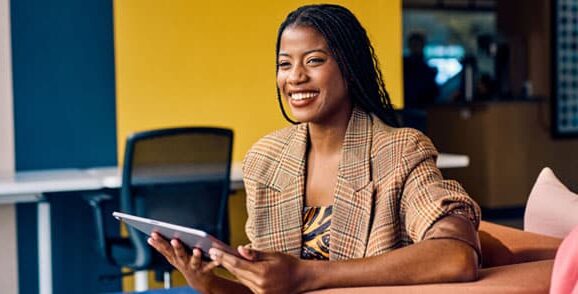Coaching is a powerful tool for personal and professional transformation. However, it’s essential to ensure that you and/or your clients are ready to commit to this process before you begin. If the coachee isn’t fully prepared to engage and create value, it’s best not to waste time trying to make it work.
In this post, with insight from Master Certified Coach (MCC) Clare Norman, we’ll recap what coaching is, discuss coaching readiness, why it’s crucial, and how we can ensure it is present in coaching relationships.
What is coaching?
Coaching is a vast field, so it can sometimes be difficult for potential coachees to grasp the concept before entering a coaching relationship. Simply put, it involves working with a coach to meet personal and/or professional goals through structured conversations and support. This approach requires coachees to think for themselves and come up with their own solutions.
This definition might seem simple enough. However, coaching’s complexity comes from its various focus areas and approaches, such as business or life coaching. What works for one person might not work for another. While a coach may have the best intentions and be fully ready to build a coaching relationship, the coachee might not be prepared for what they offer.
At this point, discussing coaching readiness is relevant, as it is critical to building a relationship and maximising the benefits of a coaching contract.
What is coaching readiness?
Coaching readiness implies that the coachee understands what coaching is and that, through proper consultation, it is the best solution for them. As Norman states in a podcast interview on Empower-World, “Cultivating Coachability,” the onus is often on the coach to decide whether the client is ready. However, before the client talks to the prospective coach, there should be a proper briefing and many other preparatory conversations.
While Norman coaches in a corporate environment, where a line manager or coaching custodian often initiates the relationship, the concept of coaching readiness is applicable in any situation. Stakeholders should implement checks to ensure alignment before the client and the coach meet. Sometimes, a coachee is not ready, or other interventions, such as training or counselling, are more appropriate.
Norman’s approach is that coaches need to “claim their agency,” meaning that conversations with all stakeholders must occur before a coaching relationship can begin. Only once stakeholders establish that coaching is the right option should the coachee identify a coach they think they will resonate with. After that, they can have a brief meet-and-greet chat to see if they are a good fit to work together, known as a “chemistry call.”
Importantly, coaching readiness requires all stakeholders to have a coaching mindset. While this process can support profound transformation, coachees must be willing to shift their perspective, which not everyone is ready for. Other obligations and circumstances might also impact a person’s readiness level, which stakeholders must assess beforehand.
In short, some factors that may prevent coaching readiness include:
- Inability or unwillingness to commit to coaching
- Reluctance to engage in deeper conversation
- Other competing priorities (for example, a new parent who is juggling multiple responsibilities)
- Confusion about what coaching is and what it involves
On that note, it’s now relevant to consider what coaching readiness looks like in practice.
How do you know if you’re coaching-ready?
As Norman discusses in the above podcast interview, coaching readiness doesn’t always get much attention. In her view, this leads coaches to overcompensate for their clients by trying to add more value. However, this process requires coachees to think for themselves and create their own value while being guided and supported along the way.
Therefore, a better understanding of what coaching involves is beneficial. To summarise, here are some important factors that show whether you or a client is coaching-ready (or not):
- Understanding what coaching is: Norman mentions that managers sometimes turn to coaching to address a problem they must solve. However, there is a big difference between training and coaching; the latter is not a cure-all for relational or systemic issues.
- Understanding what to expect: Coaching might seem like a great idea on the surface, but is the client willing to do the work? Everyone wants to achieve their goals, but many people are reluctant to change or cannot do the deep, introspective work involved.
- Commitment: Many people want to change, but it requires dedication, regardless of whether your engagement is short or long-term. Clients need to be willing to invest and cultivate a growth mindset to reap the benefits.
Overall, a greater awareness of coaches’ and coachees’ responsibilities is necessary, which you can learn more about at SACAP Global.
Learn more about coaching at SACAP Global
At SACAP Global, we offer a range of short online courses to help you better understand coaching and how to implement it in the workplace. These courses include the following:
If you want to become a coachee, you may also be interested in our short online course, Developing a Growth Mindset. This course can help you expand your horizons and prepare for change.



